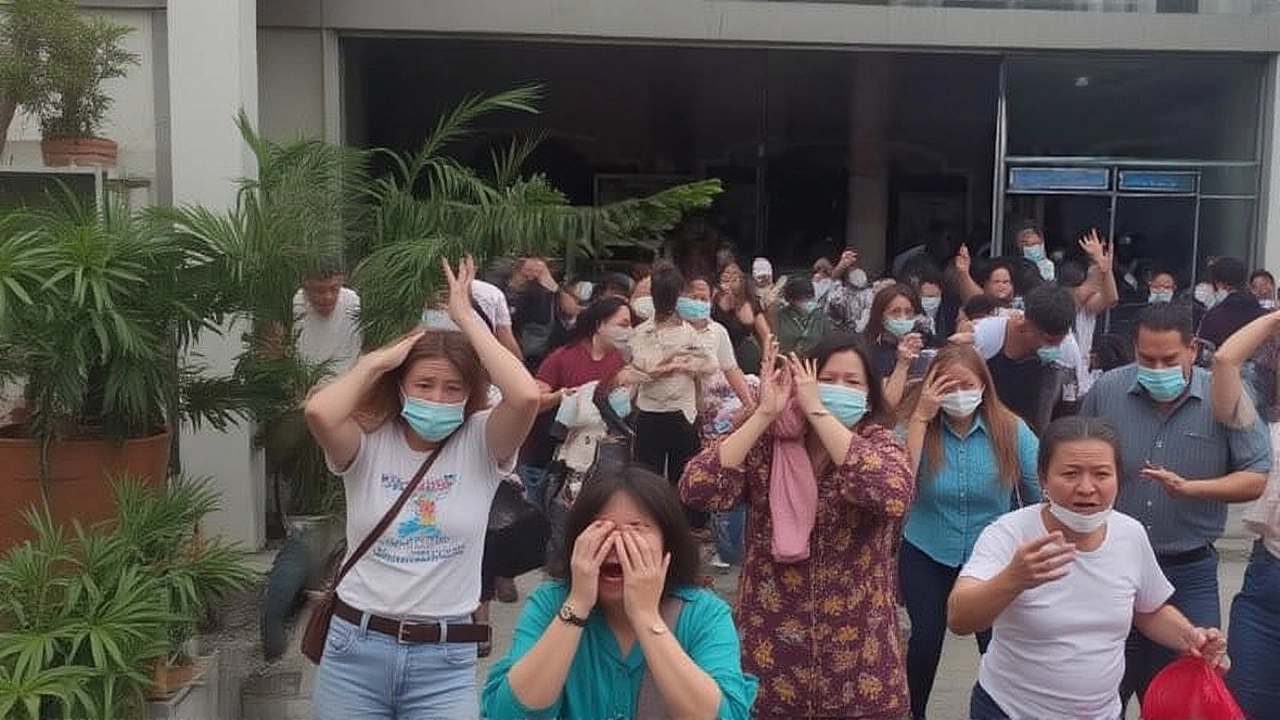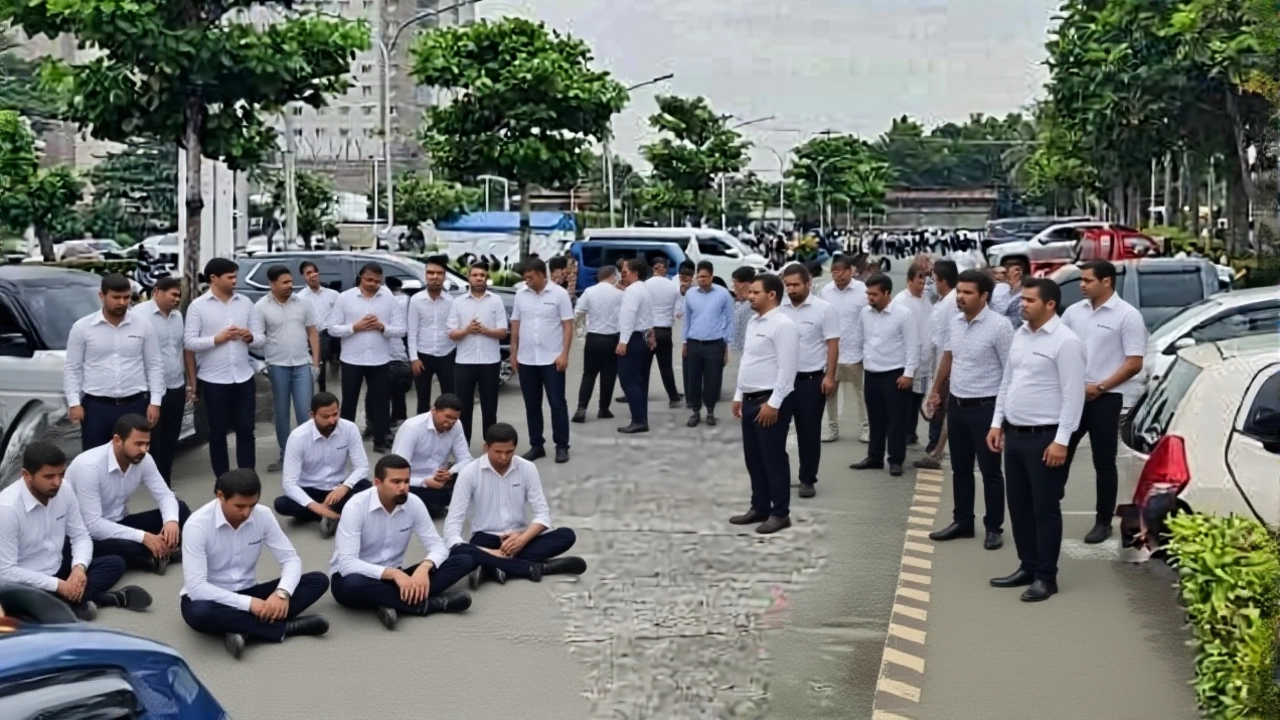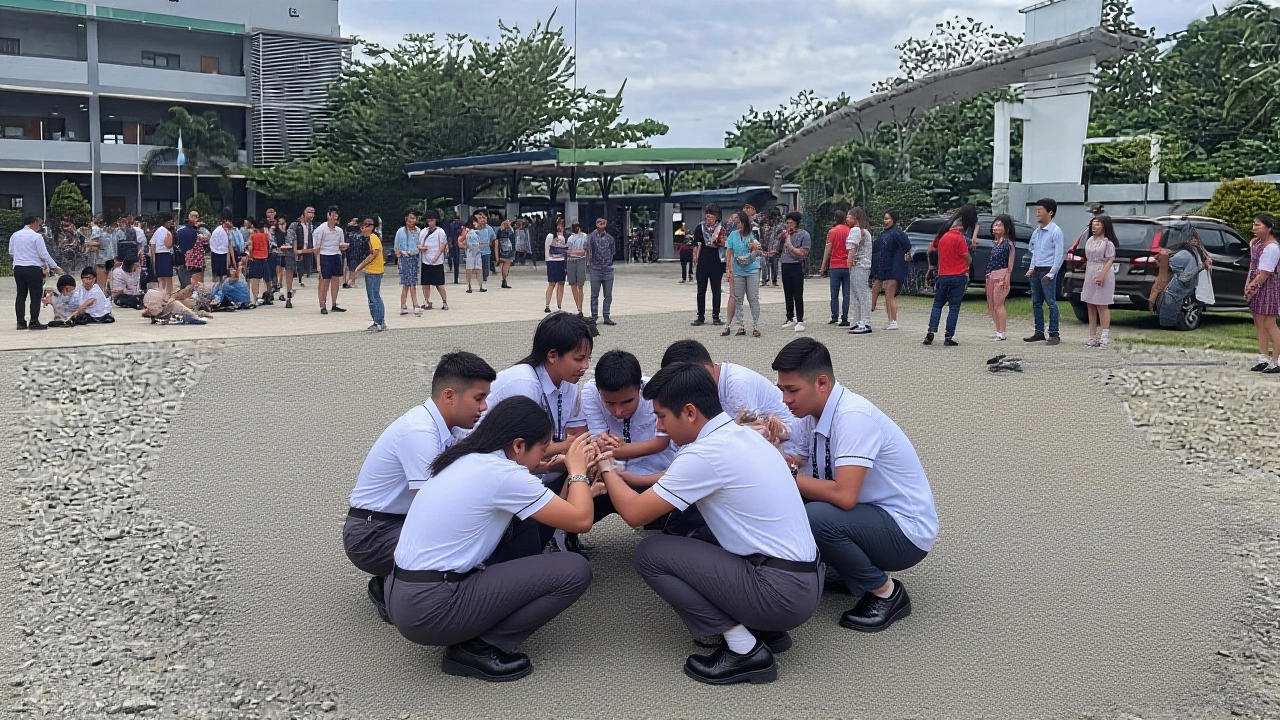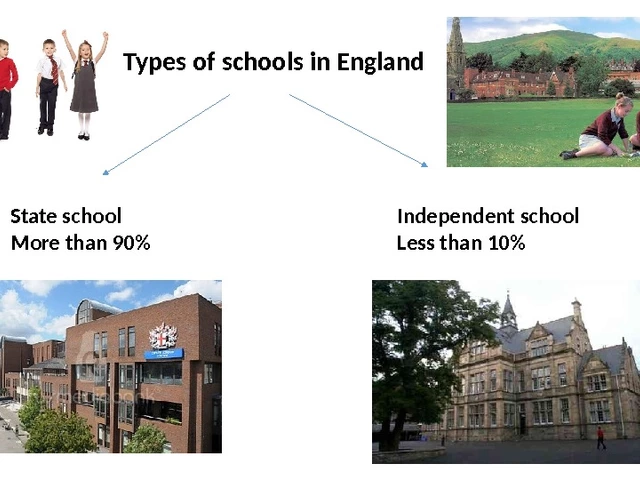
On 7.4‑Magnitude Earthquakeoffshore near Manay, Davao Oriental, Philippines struck at 9:43 a.m. Philippine Standard Time, killing at least two people and rattling homes, schools and fire stations across the region. The tremor, recorded by the DOST‑PHIVOLCS (Department of Science and Technology‑Philippine Institute of Volcanology and Seismology), registered a shallow depth of 23 km and hit with a PEI VI intensity in Manay.
What Happened
The quake’s epicenter lay 48 km northeast of Manay, a coastal town that felt the ground shake so hard many residents fled to the streets. According to Moneycontrol, fire trucks in nearby Panabo City swayed like ship masts, while people in Butuan City gathered in open areas as a precaution.
Immediately after the main shock, a brief tsunami alert covered a 300‑km stretch of coastline. The warning was lifted within an hour, but the episode reminded everyone why the Philippines sits on the volatile Pacific Ring of Fire.
Immediate Impact
Two fatalities were confirmed by local officials, and dozens more suffered minor injuries. Structural damage ranged from cracked plaster in older homes to more serious weakening of poorly‑built schools and health centers. In Manay, wall plaster fell, heavy furniture shifted, and a few boulders rolled down hillsides, prompting the local civil defense chief to urge residents to stay outdoors until aftershocks subsided.
Critical infrastructure—particularly the district hospital in Davao Oriental and several primary schools—has been earmarked for rapid inspections. The Office of Civil Defense dispatched emergency response teams, while the national disaster fund readied cash assistance for affected families.
Aftershocks and Ongoing Threat
By 4:00 p.m. PST the Philippine Seismic Network, part of the DOST‑PHIVOLCS network, logged 299 aftershocks ranging from magnitude 1.2 to 5.8. The strongest, a 5.8‑magnitude jolt at 3:12 p.m., again rattled Manay and set off a fresh wave of panic.
Authorities warned that strong aftershocks could persist for weeks, increasing the risk of landslides in the region’s steep terrain. Residents have been advised to keep emergency kits ready and to heed any future evacuation orders.

Response from Authorities
Dr. Renato Solidum Jr., director of DOST‑PHIVOLCS, said the quake’s magnitude and shallow depth make aftershocks “inevitable” and urged communities not to return to damaged buildings until cleared.
Governor Ronald Dela Rosa of Davao Oriental declared a state of calamity for the province, unlocking ₱500 million (approximately US$9 million) in emergency funds. The Department of Social Welfare and Development (DSWD) is coordinating relief distribution, prioritizing food, clean water and temporary shelters.
Local NGOs, including the Red Cross chapter in Davao, have set up triage tents near the provincial hospital. Meanwhile, the Philippine Coast Guard stands by to respond if a tsunami re‑emerges, though current sea‑level gauges show no abnormal rise.
Historical Context
The Philippines averages several hundred quakes a year, but few reach the destructive power of this event. Between 1885 and 2023, Davao Oriental has recorded six major quakes—M7.1 to M8.3—most notably the twin M7.1 and M7.5 shocks on 17 May 1992 that sparked a tsunami along Mindanao’s east coast.
Just two weeks earlier, a magnitude 6.9 earthquake rattled Cebu, killing 74 people and underscoring the archipelago’s seismic volatility. The December 2 2023 magnitude 7.6 Mindanao quake, which felled over 8,300 houses and left more than 100 k people homeless, is still fresh in the collective memory, shaping today’s response.

What Lies Ahead
Experts predict aftershocks could continue at magnitudes above 4.0 for at least a month, especially as the Philippine Trench’s subduction zone releases built‑up stress. PHIVOLCS will keep its 87 permanent monitoring stations active, issuing real‑time alerts through the national earthquake early‑warning system.
Long‑term mitigation plans include retrofitting vulnerable schools, enforcing stricter building codes in coastal towns, and expanding community‑based disaster drills. If the government follows through, the province could emerge more resilient, but the immediate priority remains rescue, relief and ensuring that families have a safe roof over their heads.
Frequently Asked Questions
How does this earthquake affect residents of Davao Oriental?
The tremor caused fatalities, injuries, and damage to homes, schools and the main district hospital. Emergency shelters have been set up, and the provincial government has declared a state of calamity to unlock disaster funds for rebuilding and temporary assistance.
What is the likelihood of more strong aftershocks?
PHIVOLCS recorded 299 aftershocks by late afternoon, with the largest at magnitude 5.8. Scientists say the region can expect additional shocks above magnitude 4.0 for weeks, potentially triggering landslides in steep areas.
Why was a tsunami warning issued and then lifted?
The offshore epicenter raised concerns of a seafloor displacement capable of generating a tsunami. Sea‑level sensors, however, showed no abnormal rise, prompting authorities to cancel the warning within an hour.
How does this event compare to the recent Cebu earthquake?
Both quakes exceeded magnitude 6.5, but the Cebu shock was deeper and caused more casualties (74 deaths). The Davao Oriental quake was shallower, producing stronger ground shaking (PEI VI) and a higher number of aftershocks, though it resulted in fewer fatalities so far.
What long‑term measures are being discussed to reduce quake damage?
Officials are pushing for stricter building codes, retrofitting of schools and hospitals, and expanded community disaster‑preparedness drills. Increased funding for seismic monitoring and early‑warning infrastructure is also on the agenda.





